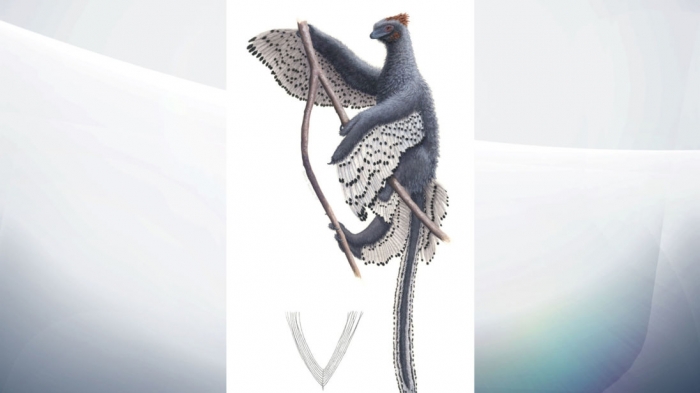They found its feathers had a short quill from which long and flexible barbs emanated at low angles to form two vanes and a forked feather shape.
The experts, who have created a mock-up image of the dinosaur after examining its fossils, said the animal's feathers would have probably caused drag when it tried to fly between trees.
It is also likely that the dinosaur's feathers would not have been as good as modern feathers when it comes to repelling water and regulating temperature.
The creature's four wings consisted of feather-covered arms and legs which may have helped it glide before the evolution of powered flight.
The scientists claim their picture interpretation of Anchiornis, part of a group of feathered carnivorous dinosaurs called paravians, is a highly accurate representation.
University of Bristol's Evan Saitta said: "The novel aspects of the wing and contour feathers, as well as fully feathered hands and feet, are added to the depiction.
"Most provocatively, Anchiornis is presented in this artwork climbing in the manner of hoatzin chicks, the only living bird whose juveniles retain a relic of their dinosaurian past, a functional claw.
"This contrasts much previous art that places paravians perched on top of branches like modern birds."
He said such perching is not likely given the lack of a reversed toe seen in modern perching birds.
The researcher also said the animal's ability to climb was consistent with its "well-developed" arms and claws seen in paravians.
"Overall our study provides some new insight into the appearance of dinosaurs, their behaviour and physiology, and the evolution of feathers, birds and powered flight," said Mr Saitta.
The new findings come after the researchers investigated feather structures in different specimens from museums in China and Germany.
Their study was published in the journal Paleontology.
More about: #science
















































